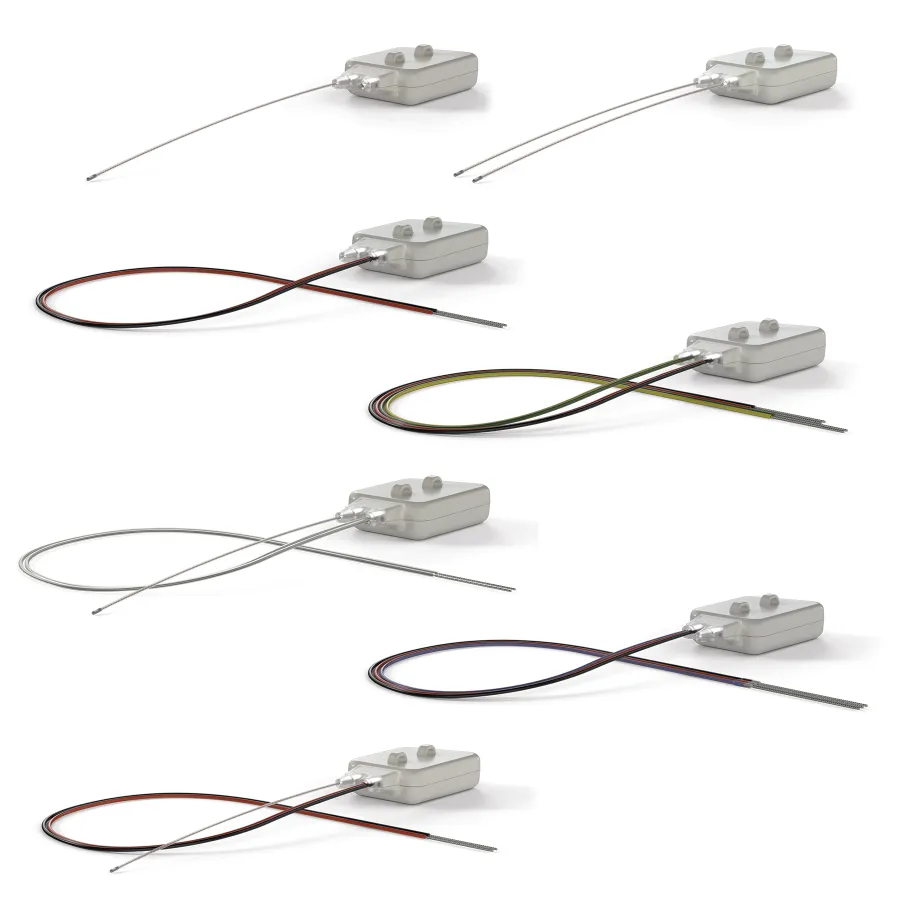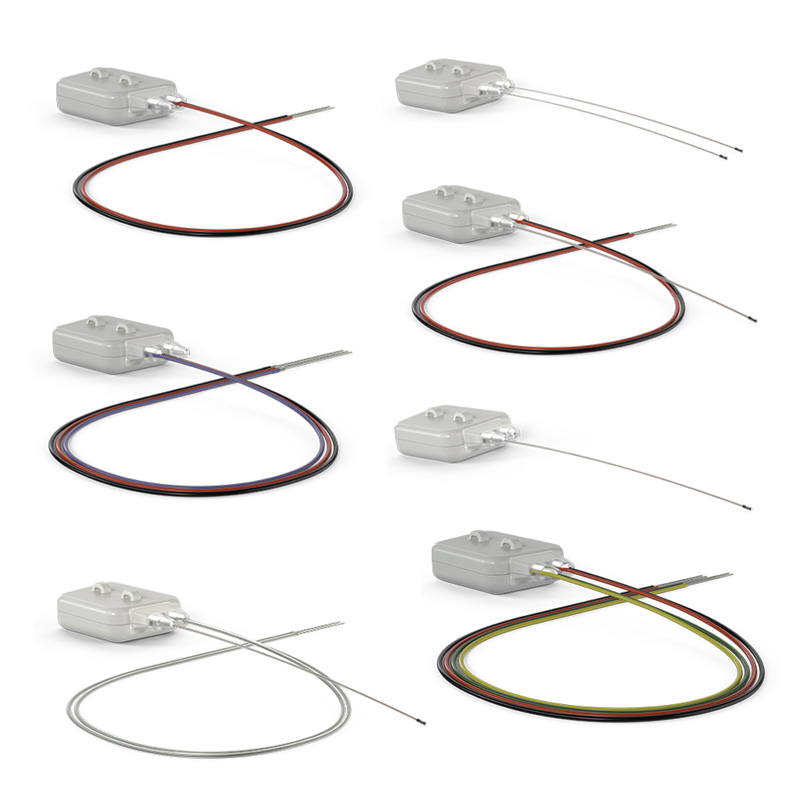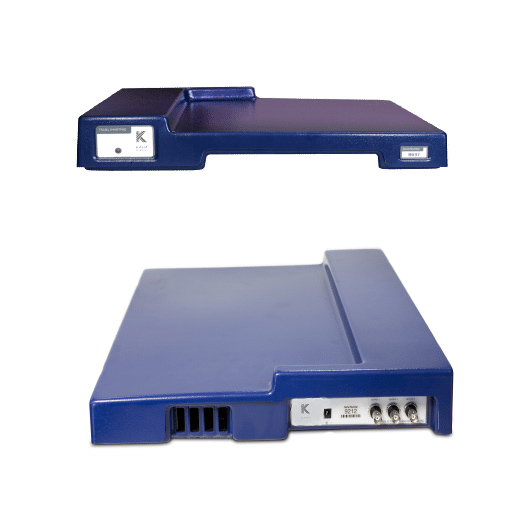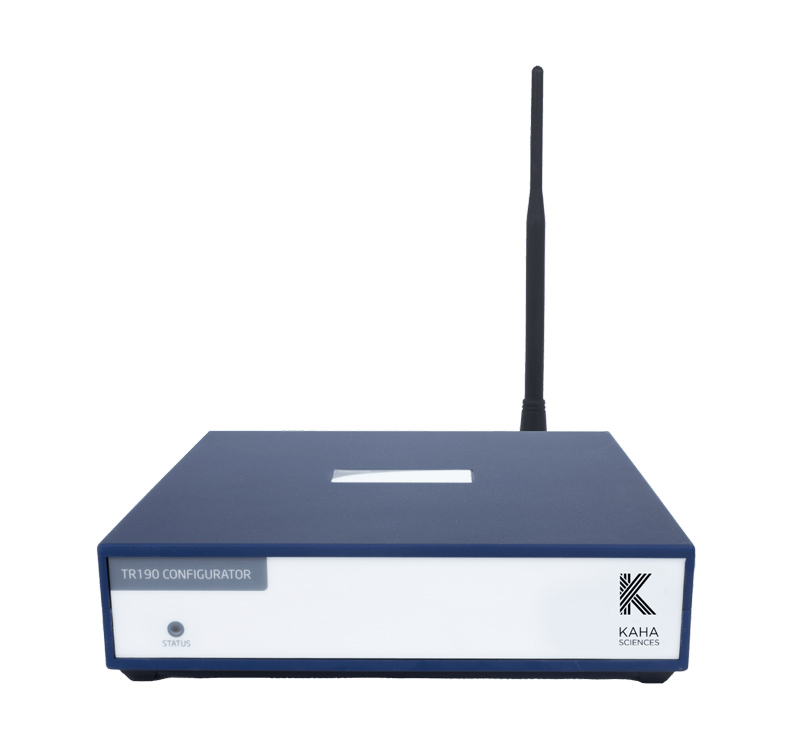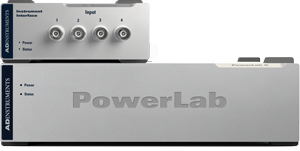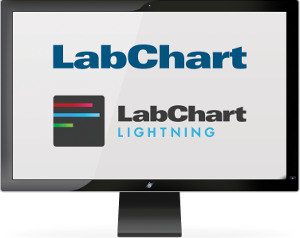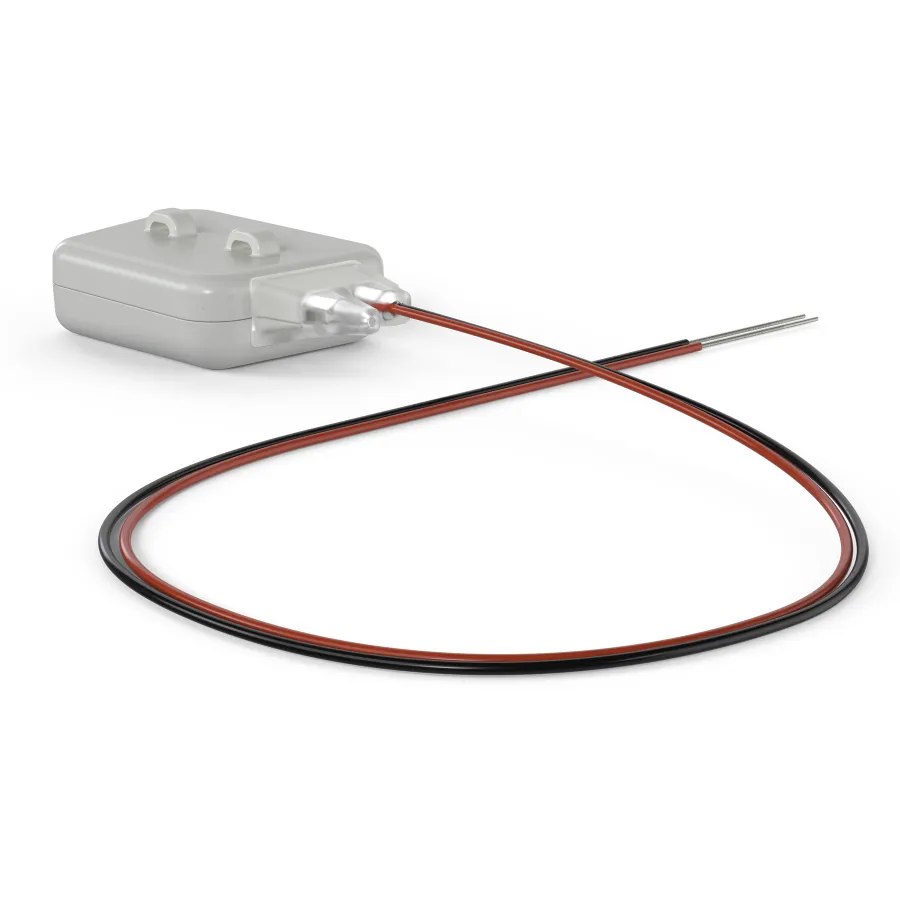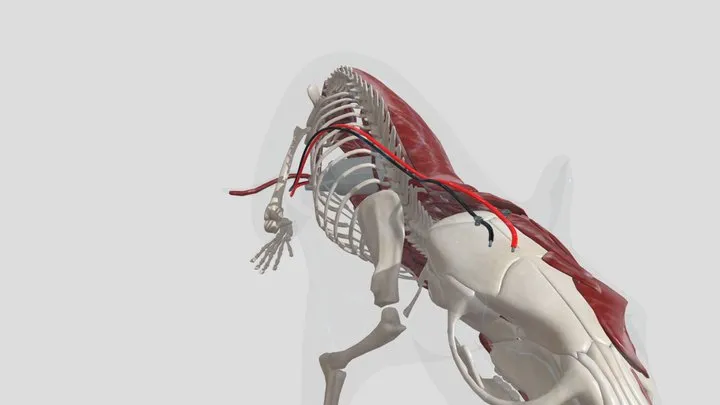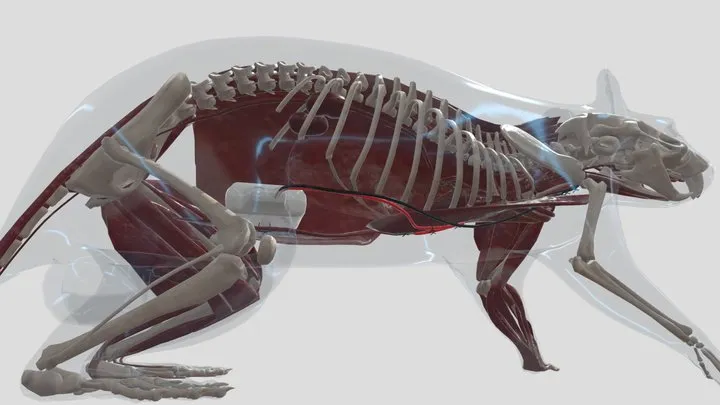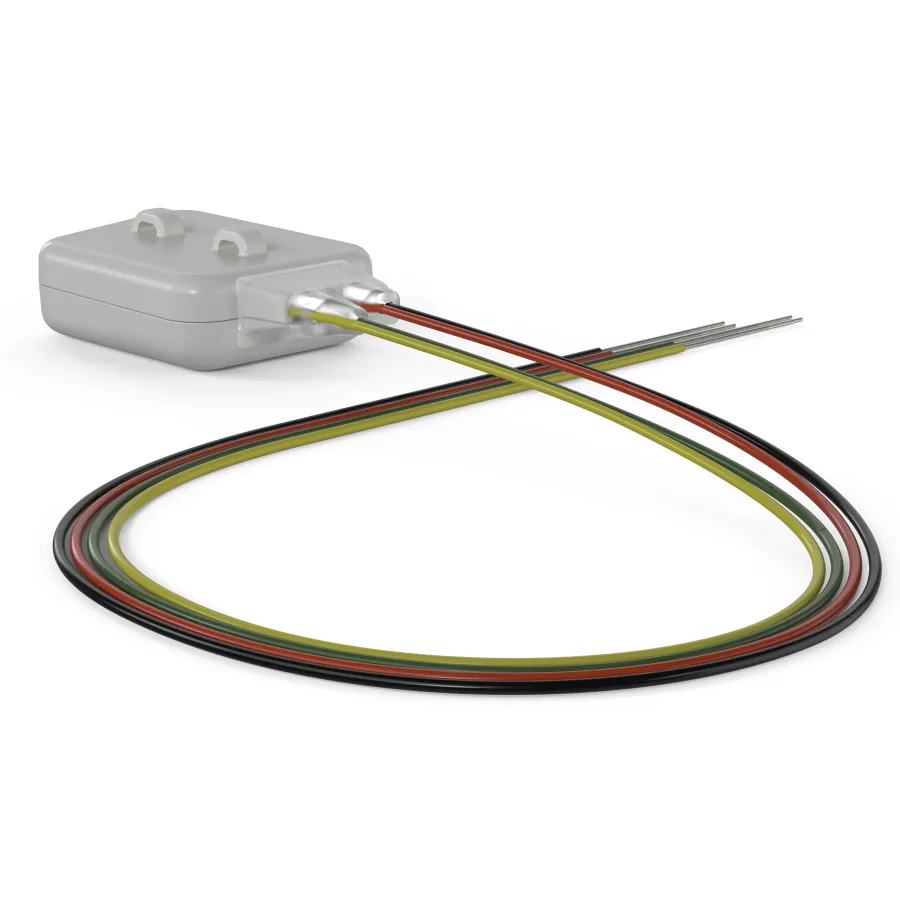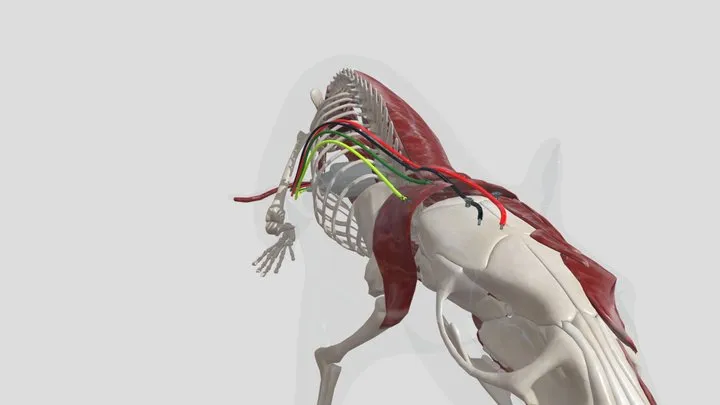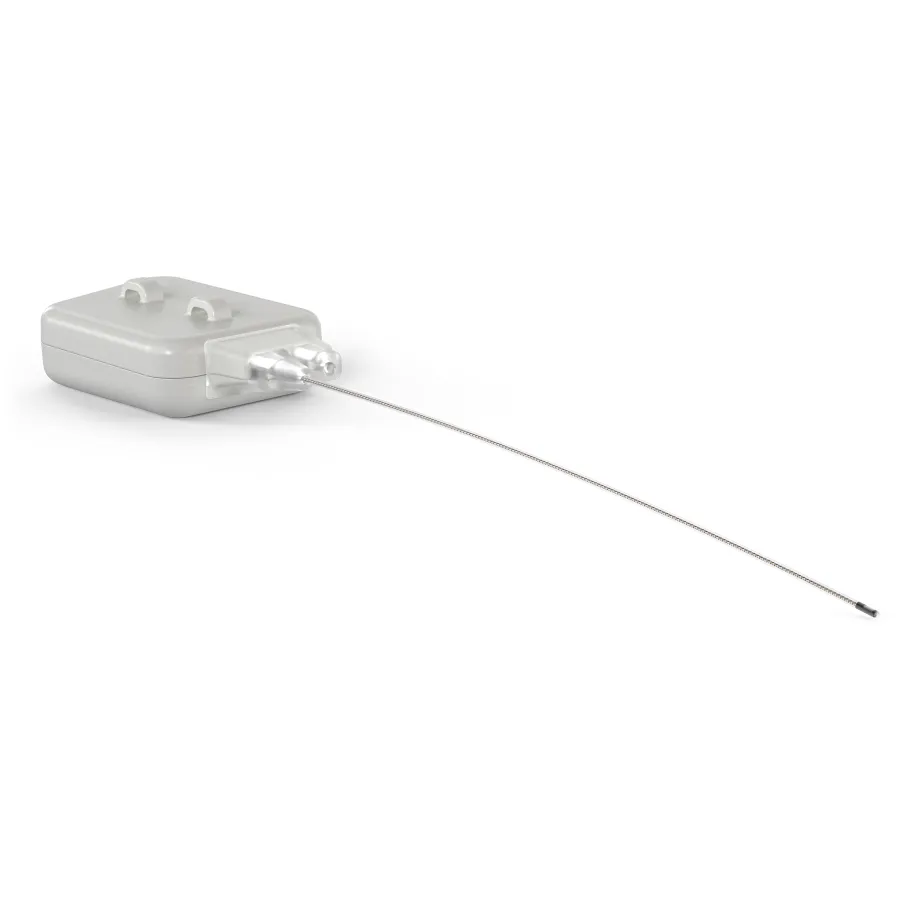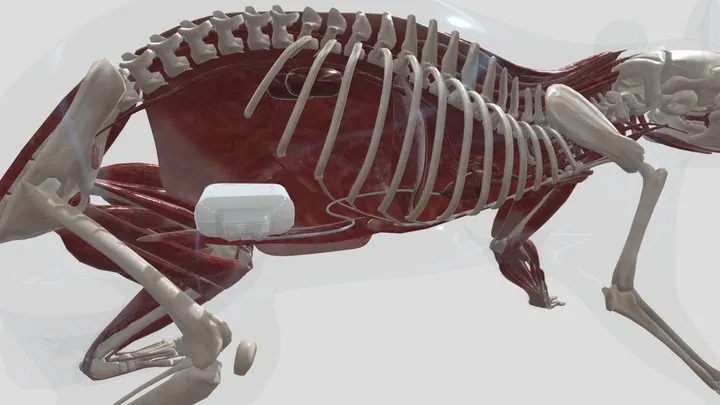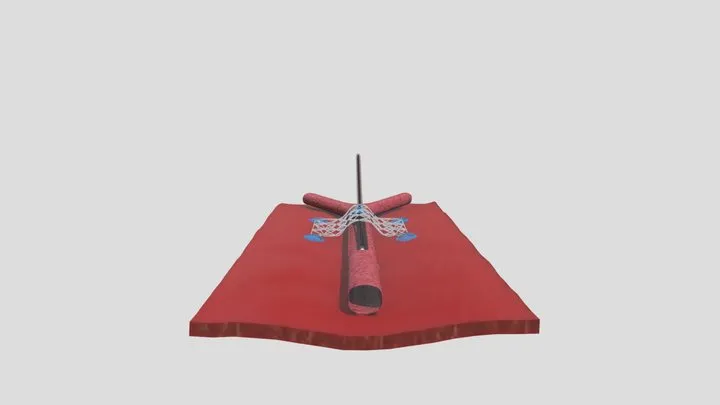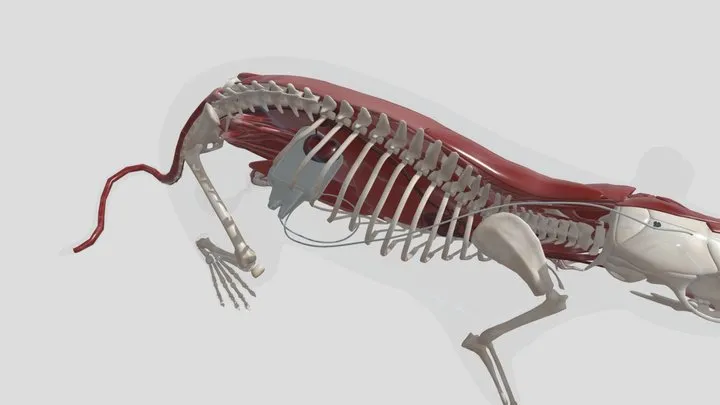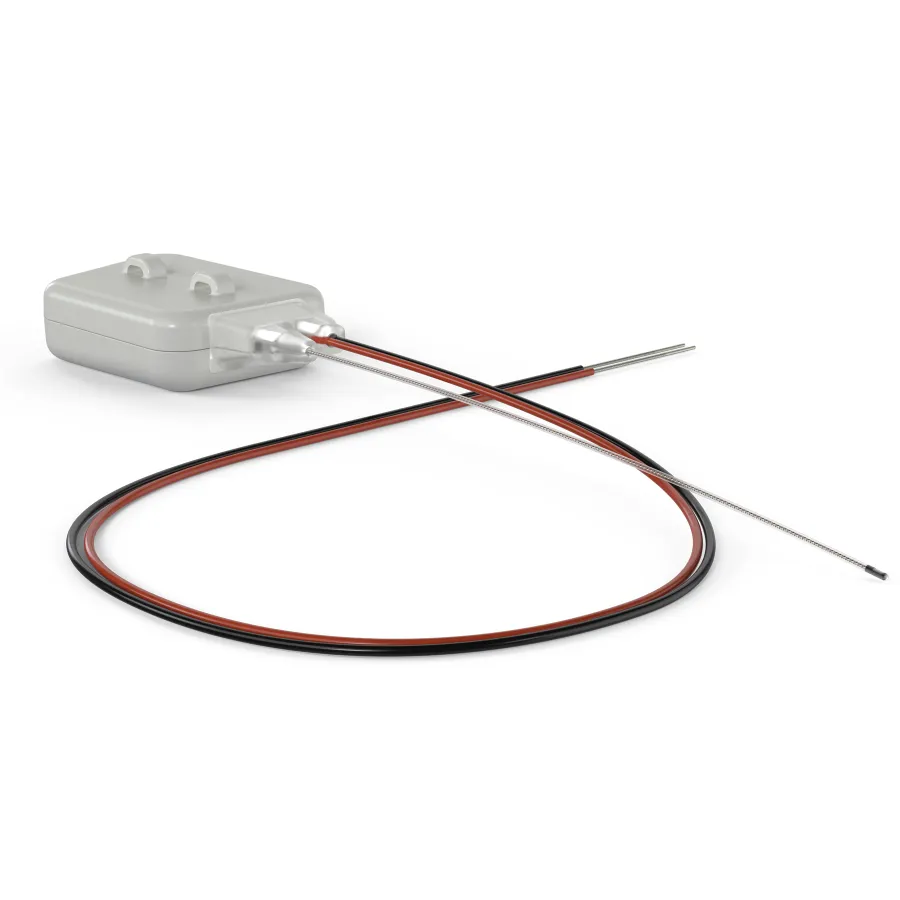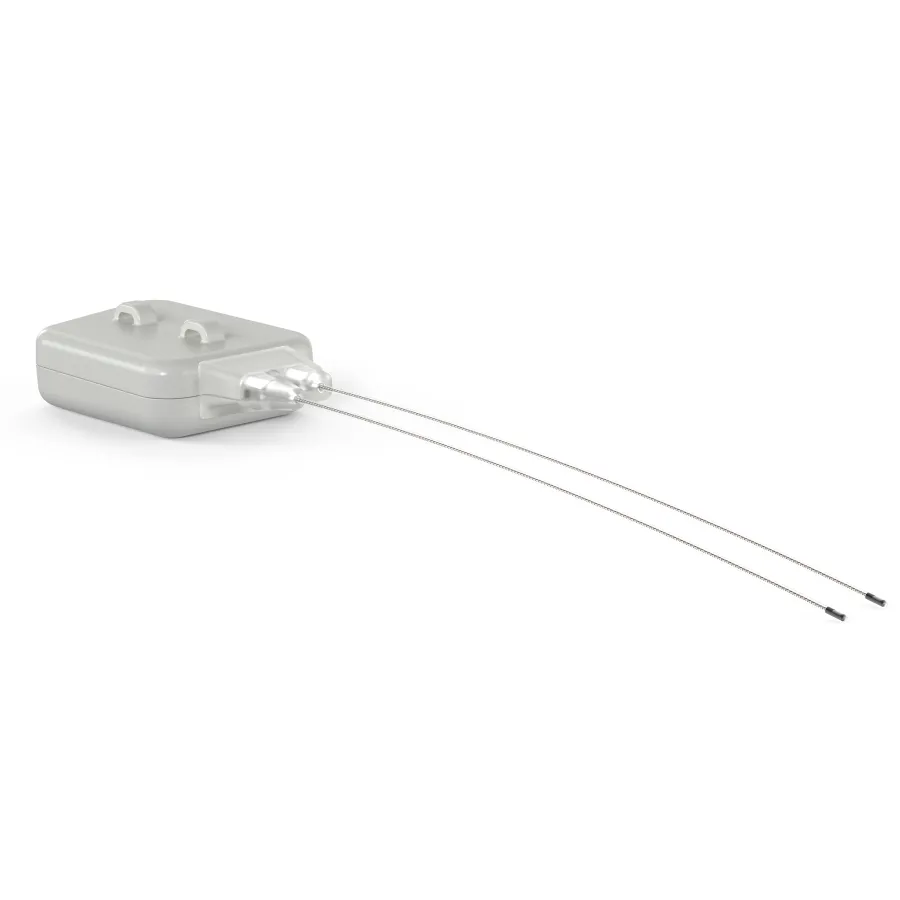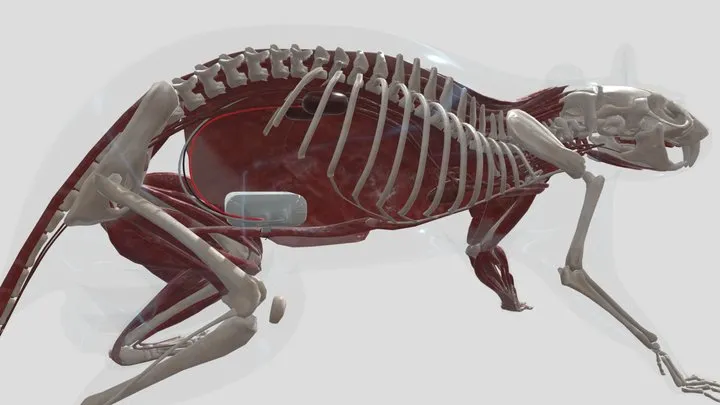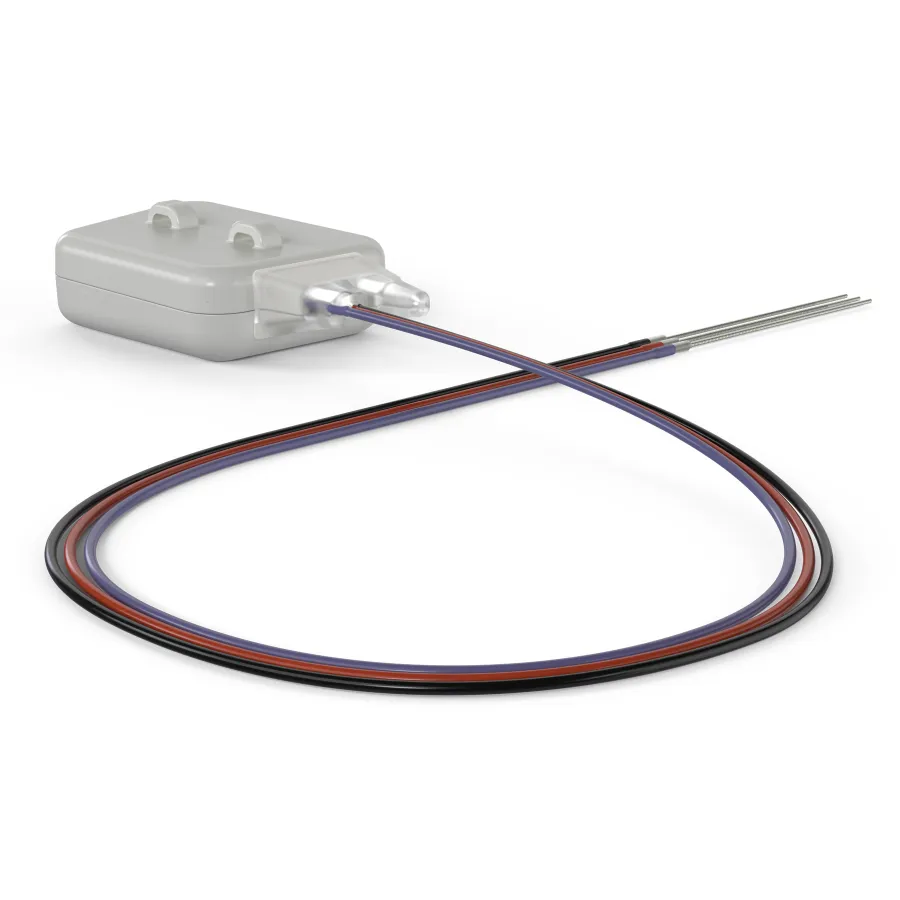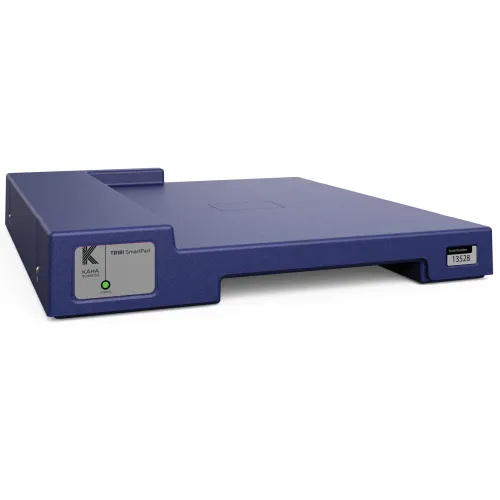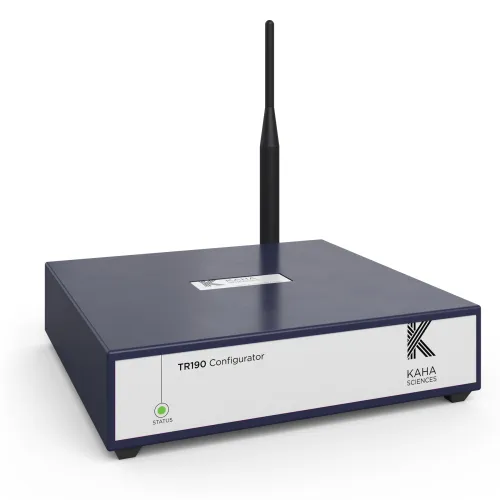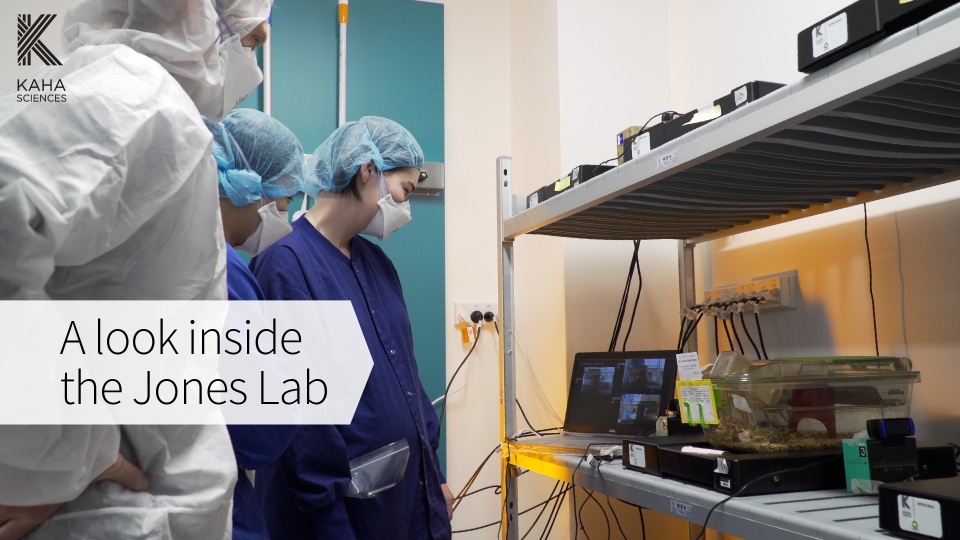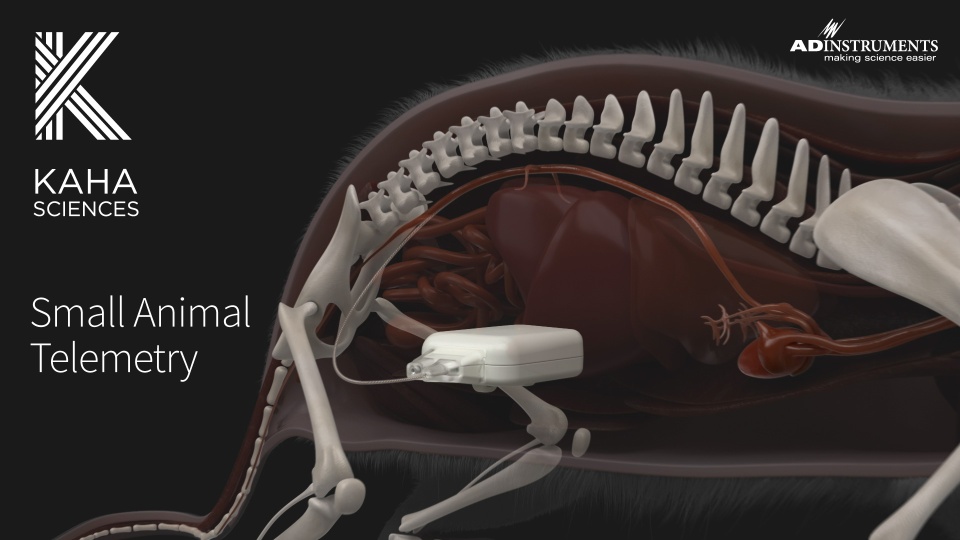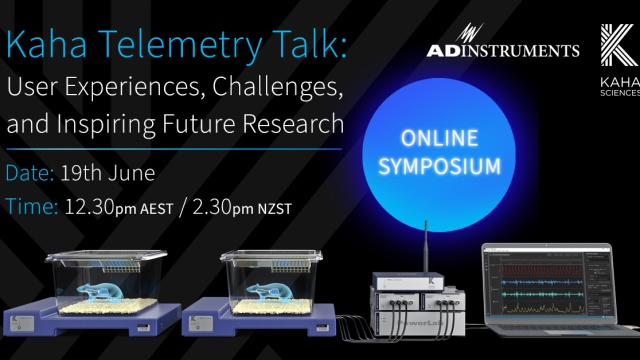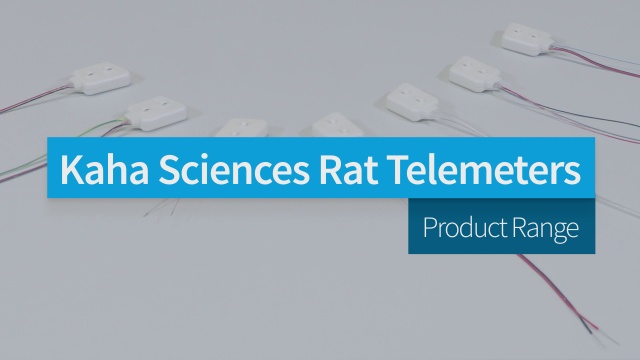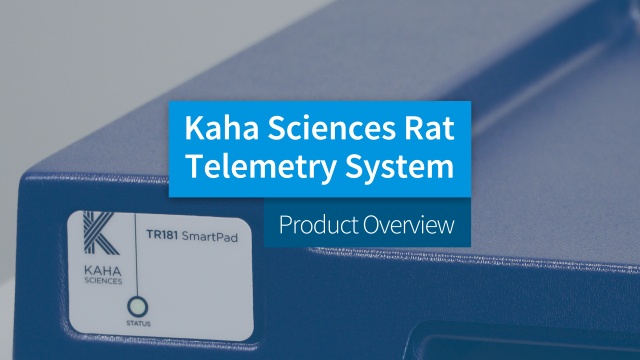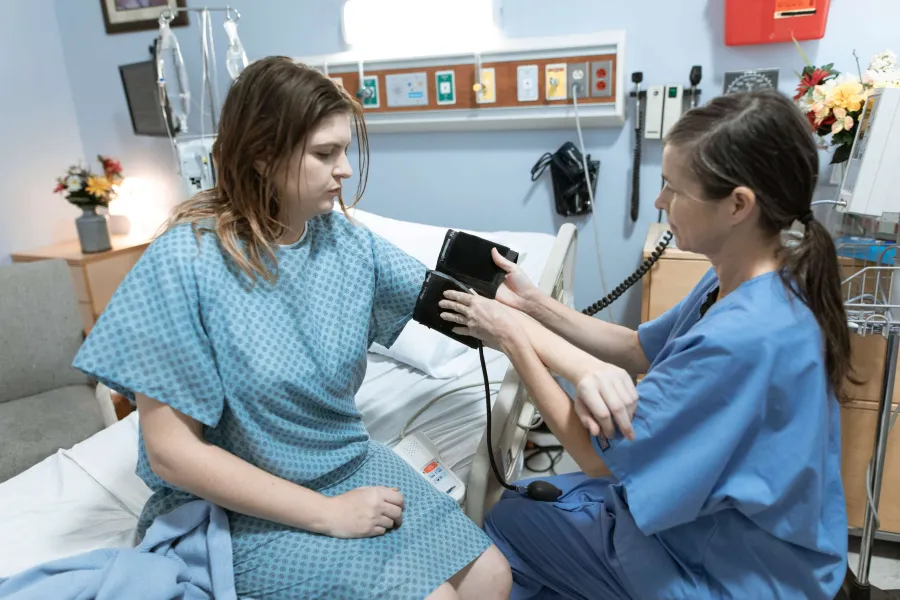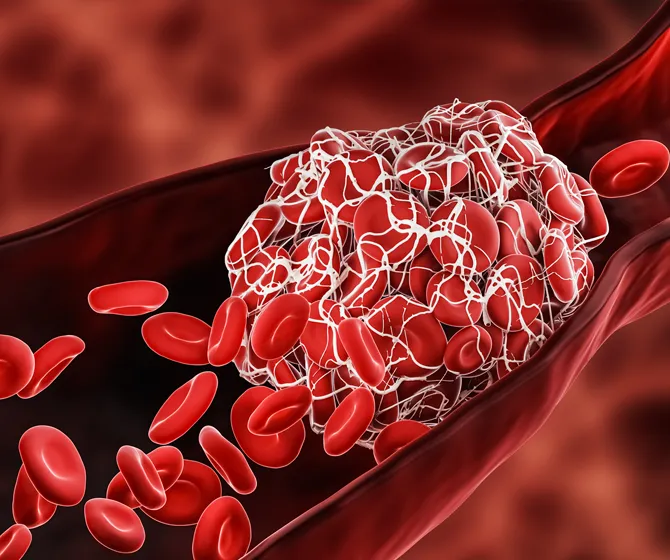Rat Telemeters
Kaha Sciences rat telemeters provide the ideal solution for research scientists looking to record high quality wireless telemetry signals.
Frequently purchased with Rat Telemeters
Overview
Features of Kaha Rat Telemeters
- Powered by the SmartPad using patented wireless inductive technology, providing higher sampling rates (2 kHz) and temporal resolution for superior data quality.
- Supports unique signal acquisition including tissue oxygen and SNA.
- Pressure sensors incorporate Millar Mikro-TipTM catheter technology for unparalleled signal quality in a telemetry system.
- Data transmission range up to 5 meters with battery backup and in vivo recharging allows for experimental scenarios where a greater range of movement is required e.g. water maze behavioural studies.
- Cohousing feature enables two rats in the same cage or single rat (>350g) implanted with two telemeters.
- All implants provide improved animal welfare by allowing the subject to move freely within the cage, a cohousing option to reduce stress of single housing, and being fully software controlled to reduce handling/impact of stress. Find out more about the benefits of telemetry.
- Simple and customizable system setup: build a flexible telemetry system tailored to your research needs.
Options available to measure and transmit high-fidelity physiological signals such as:
Configure a system to meet your exact needs
Simple and Customizable Telemetry System Setup
Configure a Kaha Sciences Rat telemetry system to meet your exact research needs. A typical telemetry setup requires one telemeter of your choice and one SmartPad per animal. Each laboratory will just require one Configurator in order to configure all your Kaha equipment.
- Select and pair transmission frequencies between SmartPads and their Telemeters using Configurator.
- Surgically implant the Telemeter.
- Connect the SmartPad to a PowerLab and/or Instrument Interface via BNC.
You are then ready to analyze your data using LabChart 8 or LabChart Lightning.
Cohousing
An additional advantage of a Kaha Sciences Rat Telemetry System is the cohousing feature:
- Allows two rats (>175g), each implanted with one telemeter, to be housed together in a single cage to reduce stress of single housing and lab space requirements, or
- Two telemeters to be implanted in one animal (>350g), allowing the measurement of up to four physiological signals (e.g. Oxygen + dual pressure or oxygen + SNA with pressure)
With Cohousing, the system continues to regulate the power supplied to both telemeters seamlessly while collecting continuous data with the expected accuracy and quality. Cohousing still requires one SmartPad per telemeter, as well as a Configurator System for the laboratory.
Existing systems can be upgraded to use the Cohousing feature without the need to purchase additional hardware. Cohousing also requires ConfigSoft software version 3.0 or later.
Find out more about Small Animal Telemetry with ADI and Kaha Sciences
Product Configurations
Biopotential Telemeter (ECG, EEG, EMG)
The Rat Biopotential Telemeter measures the biopotential difference between the two electrode leads. These leads can be placed to measure a single biopotential signal such as ECG, EEG, or EMG. Weighs ~12 g (7 cm3) and includes 25 cm long biopotential leads.
Dual Biopotential Telemeter (ECG, EEG and/or EMG)
The Dual Rat Biopotential Telemeter measures the biopotential difference between each pair of electrode leads. The leads can be used to measure two biopotential signals such as ECG, EMG and/or EEG. Weighs ~12 g (7 cm3) and includes 25 cm long biopotential leads.
Pressure Telemeter
The Rat Pressure Telemeter measures high fidelity pressure using a solid-state Millar Mikro-TipTM sensor. Pressure is measured directly at the tip of the catheter (2Fr in diameter, 9 cm long (15 cm & 25 cm options available)) and the telemeter can be used to measure arterial, venous, ventricular or intracranial pressure (25 cm catheter required). The telemeter weighs approximately 12g.
Pressure Biopotential Telemeter
The Rat Pressure Biopotential Telemeter combines measurement of high-fidelity pressure using a solid-state Millar Mikro-TipTM sensor with a single biopotential signal (e.g. ECG, EEG or EMG). Pressure is measured directly at the tip of the pressure catheter (2Fr in diameter, 9 cm long (15 cm & 25 cm options available)) and the telemeter can be used to measure arterial, venous, ventricular or intracranial pressure (25 cm catheter required). The biopotential signal measures the potential difference between the pair of 25 cm coiled electrode leads. The telemeter weighs approximately 12g.
Dual Pressure Telemeter
The Rat Dual Pressure Telemeter measures two high-fidelity pressures using solid-state Millar Mikro-TipTM sensors. Pressure is measured directly at the tip of each pressure catheter (2Fr in diameter, 9 cm long (15 cm & 25 cm options available)) and the telemeter can be used to measure arterial, venous, ventricular and/or intracranial pressures (25 cm catheter option).
SNA and Pressure Telemeter
The Rat Sympathetic Nerve Activity (SNA) and Pressure Telemeter is the only commercially available telemetry device that allows concurrent measurement of SNA and pressure. the telemeter weighs approximately 12 g with a Millar solid state pressure sensor (2Fr in diameter, 9 cm long (15 cm & 25 cm options available)) and multi-stranded SNA lead wires (25 cm long). The telemeter samples the pressure and SNA signals at 2 kHz with an SNA input range of ±60 µV.
Tissue Oxygen Telemeter
The Rat Tissue Oxygen Telemeter is an implantable potentiostat with a carbon paste electrode specifically configured for measuring tissue (e.g. brain, kidney) oxygen concentration in freely moving rats >175 g. The telemeter can be easily cleaned and sterilized for reuse after attachment of new electrodes. Ideal option for cohousing option in order to measure tissue oxygen measurement with other signals by placing two telemeters in one rat.
Related
Research Applications
Animal Telemetry
Evoked Responses and Stimulation
Animal Neuroscience
Nerve Recording
Animal Autonomic
Blood Pressure
Animal Autonomic
ECG
Animal Autonomic
HRV
Animal Autonomic
Tissue Oxygen
Animal Tissue and Circulation
Signals
Key Features
- Encased in durable, biocompatible hard-shell (liquid crystal polymer)
- Suitable for use in rats >175g
- High frequency sampling transmission (2kHz)
- All telemeter options measure temperature as a recorded signal (except in cohousing mode)
- When used on the SmartPad, supports continuous recording for extended sampling periods
- Battery backup allows the telemeter to continue transmitting data for up to 4-6 hours (telemeter model dependent) if the animal is away from the SmartPad recharging field (up to 5 meters distance).
- Reliable data recording capabilities with no data loss, crossovers or interference - 40 independent data collection frequencies to choose from using Configurator System
Support
Support Articles
Our Support Articles contain answers to common questions, how-tos, solutions, and documentation.
Training and Workshops
Maximize time and resources with our customized training services delivered at your facility, on your equipment, on your terms.
Related Videos
Details and Tech Specs
Technical
General Telemeter Specifications
| Temperature operating range | 8 to 41 degrees Celsius |
| Sampling frequency | 2 kHz |
| Low Pass filter cut-off frequency (SmartPad) | 1 kHz |
| Transmission range | Up to 5 m (may depend on laboratory environment) |
| Transmitted signal | 2.4 GHz, fully digital |
| Transmission frequencies | 40 available, configured by user |
| Minimum rat weight | 175 g |
| Outer material | Biocompatible hard-shell (liquid crystal polymer) |
| Weight | ~13.5g |
| Dimensions | 31.5 x 24 x 11 mm |
| Battery life | Continuous charging on SmartPad. Out of SmartPad charging field, battery life is ~4.6 hrs. |
| Recharge time | 3 hours minimum |
| Power On-off | Activation by SmartPad & deactivation by Configurator System. |
| Analog output calibration value | Pressure: 1V output = 0mmHg, 2V output = 100 mmHg Biopotential: 2V output = 0mV input, 4V output = 2 mV input SNA: 2V output = 0µV input, 4V output = 60 µV input Temperature: 0V output = 0℃, 1V output = 20℃ |
Individual Model Specifications
| TR50B Biopotential Telemeter | TR50BB Dual Biopotential Telemeter | TRM54P Pressure Telemeter | TRM54PB Pressure Biopotential Telemeter | TRM54PP Dual Pressure Telemeter | TRM56SP SNA & Pressure Telemeter | TR57Y Tissue Oxygen Telemeter | |
|---|---|---|---|---|---|---|---|
| Biopotential Input range | ∓2 mV | ∓2 mV | |||||
| Biopotential Resolution | 12 bit A/D | 12 bit A/D | |||||
| Biopotential High pass characteristics | AC coupled, single pole, -3dB point at 0.7 Hz | AC coupled, single pole, -3dB point at 0.7 Hz | |||||
| Biopotential lead wires | 25 cm length, coiled stainless steel (1 pair) | 25 cm length, coiled stainless steel (2 pairs) | 25 cm length, coiled stainless steel (1 pair) | ||||
| Biopotential lead wire diameter | 1 mm | 1 mm | |||||
| Calibration | Precalibrated | ||||||
| Analog output calibration values | Biopotential: 2V output = 0mV input, 4V output = 2 mV input Temperature: 0V output = 0℃, 1V output = 20℃ | Pressure: 1V output - 0mmHg, 2V output = 100 mmHg Temperature: 0V output = 0℃, 1V output = 20℃ | Pressure: 1V output - 0mmHg, 2V output = 100 mmHg Biopotential: 2V output = 0mV input, 4V output = 2 mV input Temperature: 0V output = 0℃, 1V output = 20℃ | Pressure: 1V output - 0mmHg, 2V output = 100 mmHg Temperature: 0V output = 0℃, 1V output = 20℃ | Pressure: 1V output - 0mmHg, 2V output = 100 mmHg SNA: 2V output - 0 µV input, 4V output = 60 µV input Temperature: 0V output = 0℃, 1V output = 20℃ | Oxygen: 1V output - 0nA, 2V output = -200nA Temperature: 0V output = 0℃, 1V output = 20℃ | |
| Pressure sensor accuracy | ∓2 mmHg | ||||||
| Pressure sensor drift | <4 mmHg per month | ||||||
| Pressure sensor Frequency response | DC to 500 Hz (-3 dB) | ||||||
| Standard pressure catheter dimensions | Distal tip; 660 µm OD (2Fr), Catheter; 500 µm (1.5Fr), length 9cm (15 & 25 cm options available for all except TRM56SP) | ||||||
| Pressure sensor range | -40 to 300 mmHg @ atm of 760 mmHg (720 to 1060 mmHg absolute pressure) | ||||||
| Ambient pressure range | 650 to 800 mmHg | ||||||
| Maximum operating altitude | 1300 m | ||||||
| SNA Input range | ∓60 µV | ||||||
| SNA High pass filter | -3dB point at 1.5 Hz | ||||||
| SNA Input impedance | 500 kOhms at 1000 Hz | ||||||
| SNA lead wires | Multi-stranded stainless steel (length 25cm) | ||||||
| SNA lead wire diameter | 0.15 mm (wire only) | ||||||
| Potentiostat type | Voltage controlled current source | ||||||
| Set potential | -0.65V (-650mV) | ||||||
| Potentiostat current measurement range | 0 to -600nA | ||||||
| Potentiostat resolution | 12 bit A/D | ||||||
| Potentiostat lead wires | Coiled stainless steel (~28cm) | ||||||
| Potentiostat wire diameter | 1 mm | ||||||
